
by Lucy | Jan 21, 2018 | Well Balanced Wisdom
Monday, January 22, 2018
Ever catch yourself thinking “oh I shouldn’t…” or I just can’t have one [insert food with no brakes]. Yep, we’ve all been there. It varies depending on a person’s taste preference and often what they grew up eating. A few I hear commonly include, potato chips, cashews, ice cream, cheese, or bite-sized Oreos. No matter what, there are certain foods that are just harder to eat in moderation.
Last year, Kristen and I read a great book called
Better Than Before by Gretchen Rubin in our book club. The book is all about making better habits. In an article, by Rubin, she talks about the concept modernization and abstinence. Some of you (like me), may already be rolling your eyes because the idea of abstaining from any food sounds terrible. That likely means you are a moderation all-star!
The snow day cookies
A friend of mine was recently telling me a story about moderation. She explained after eating a homemade chocolate chip cookie at work, “my tummy and my mouth were arguing,” because her mouth wanted another cookie but her stomach felt full. My friend goes on to tell me about the sweet, chewy, chocolatey goodness of the homemade cookies. She reports savoring each bite only to find herself still wanting more when she was done. This is a familiar experience for many of us; however, it is rare that this happens after eating celery or an apple. What’s that about?!
Effects of sugar on the brain
It’s scientifically explained, in this fascinating TED education video:
How sugar affects the brain. When we eat foods with refined sugar or simple carbohydrates (think white rice, pasta, potatoes, etc), those foods create a chemical release (dopamine) that feels good and may lead our brain to tell us to eat more. Our brain is designed to keep us alive and in case there is a famine, it will ensure we “stock up” when energy-dense foods are available.
Empowering abstinence
At the beginning of the year, Well-Balanced Nutrition did a 2-week challenge to eat only from the
Well-Balanced plate, which does not include added sugars. Our plate does include fruits, vegetables, complex carbohydrates, and dairy, which all provide the energy our brains need. For me, this was an experiment to break the habit of always wanting a treat after lunch and dinner. What I didn’t expect was to feel empowered by choosing to abstain from added sugars. It is exhausting to constantly battle that voice “should I eat the cookie or shouldn’t I?” It was nice to have the decision already made when I chose to take a break from processed sugar.
Food for thought:
In the challenge, I learned, not all foods are good in moderation. Some foods create a trigger that makes it hard to stop even if I’m not hungry anymore.
What are your triggers? If you’d like to become a more balanced eater, we recommend starting to recognize what foods or situations cause you to overeat.
If you’d like to talk with a friendly expert on making (and breaking) habits, let us know.
Contact us here.

by Lucy | Jan 1, 2018 | Motivational Mondays
Last week, in a delicious yoga class at the
Hot Asana studio near Southpoint, our instructor offered props and said, “this is not to make you move, but to help you feel supported.“ This made me think of our goal at
Well-Balanced Nutrition. When most of the environment around us promotes convenience food and unbalanced options, it is our mission to give you knowledge, tools, and support to make choices that will have you feeling your best, not just surviving the day. At the same time, we aren’t forcing you to make any changes and here’s why.
Want to vs supposed to
The USDA tells us we are supposed to do 30-minutes of physical activity every day. We are supposed to eat at least five servings of fruit and vegetables… Or is it nine? We’re supposed to get eight hours of sleep. And we’re supposed to be taking at least 10,000 steps. What is your gut reaction to supposed to?
Now on the flip side, I’m curious to know what you want to do? For instance, I want to eat well balanced because I feel better when I include a fruit or vegetable with each meal or snack. I feel well rested when I get at least seven hours of sleep each night. Luckily, walking is my zen time so physical activity comes naturally. I do these things because I want to.
I know from years of practicing dietetics that if somebody is told to change, but they don’t really want to, the change is less likely to stick. You have to make the decision for yourself. Sometimes, that means changing your perspective. I do this because I want to feel better, not because I’m supposed to do this. Other times, it could mean you are simply not ready to change and that’s okay.
Choosing the right “brain food”
If you want to make a change, choosing the right brain food is important. All forms of media we take in are what I call “brain food.” For instance, if you watch evening television and suddenly find yourself craving pizza, it may be due to a Dominos commercial. While driving down the road you see a billboard for a giant juicy hamburger, it may trigger the brain to crave those foods. The people you spend time with, the places you go, where you buy food, the social media you enjoy, the books you read, the radio stations you listen to, the shows you watch, the recreation activities you do, etc. are all sources of brain food.
Ways we offer support
You can
follow us on Instagram where we post some of our favorite meal ideas or little things we find fun or inspirational throughout our day or
join our closed Facebook group where everyone shares recipes and supports one another. We offer accountability with our
Healthy Habit Tracker and one-on-one sessions for personalized support. If you are ready, we are here for you. Even if you are just
considering change, you know you can find some good “brain food” here.
Food for thought:
- What are you feeding your brain and how is it supporting you and your well-being?
- Who can you ask for support?
- What books or resources will give you more knowledge?
- Where can you find social support?
If you need more support or just want to talk about the next steps on your wellness journey,
click here to schedule a free call with one of your friendly dietitians at Well-Balanced Nutrition.

by Lucy | Dec 18, 2017 | Well Balanced Wisdom
Monday, Dec 18, 2017
But it’s a holiday! Birthday! Vacation! Or we’re celebrating! The fact is, there is always a good excuse to eat unbalanced food – especially sugar.
As we wrap up another year and holiday season, it is a good opportunity to press the reset button and take a closer look at our eating habits. Hopefully, you have been practicing
mindful and intuitive eating this season and enjoying every morsel of those special holiday foods. Of course, when there are more celebrations around the corner it’s hard to stay balanced at each meal. Also, if you and the family found yourselves constantly on-the-go these past few weeks that may mean more fast food and less time to cook.
Let’s refocus and refresh
Step 1: Get honest with yourself. Ask yourself, “How much added-sugar do I really eat?”
Sometimes, it’s hard to tell. Maybe there’s a little bit of honey in your morning oats. A little added sugar in the salad dressing at lunch. A little more sugar in the bread of the half sandwich you ate with the salad. A little bit in the afternoon granola bar. Even if you don’t consider yourself “a sweet-tooth person“ you could be taking in more sugar than you realize. Sugar enhances the flavor of foods and entices our taste buds to keep eating. That is one reason why food manufacturers keep adding it to so many of our favorite things. Especially, as the nation went to
low-fat or non-fat foods our pallets compromised by enjoying more sugar. Now we know,
fat is our friend.
Important to note, at Well-Balanced Nutrition, we do not treat sugar as the enemy. The goal is to identify where sugar is sneaking into your diet so you can mindfully choose to eat it or leave it alone. This gives our taste buds the chance to reset and notice the natural sweetness of fruits, vegetables, cream (instead of sugar in the coffee), and even some whole grains such as oats are naturally sweet.
Step 2: Clean it out.
If you decide to join our Well-Balanced Challenge and no sugar added journey we want to provide the parameters of success. In order to succeed, we need to
clean out the cupboards and
fridge of those foods that have added sugar. If you cannot bear to toss it out at least move everything out of reach. Perhaps putting foods into a concealed bag and a hard to reach cupboard. This step is crucial for your success. Many of us try to depend on willpower, only to later experience the call of the sugar monster at those unexpected hours of the day and night. By eliminating the temptations from your office and kitchen you can then fill in with lots of yummy natural foods that provide the fuel your body and mind needs. There’s even a 2-week meal plan to guide you on the journey!
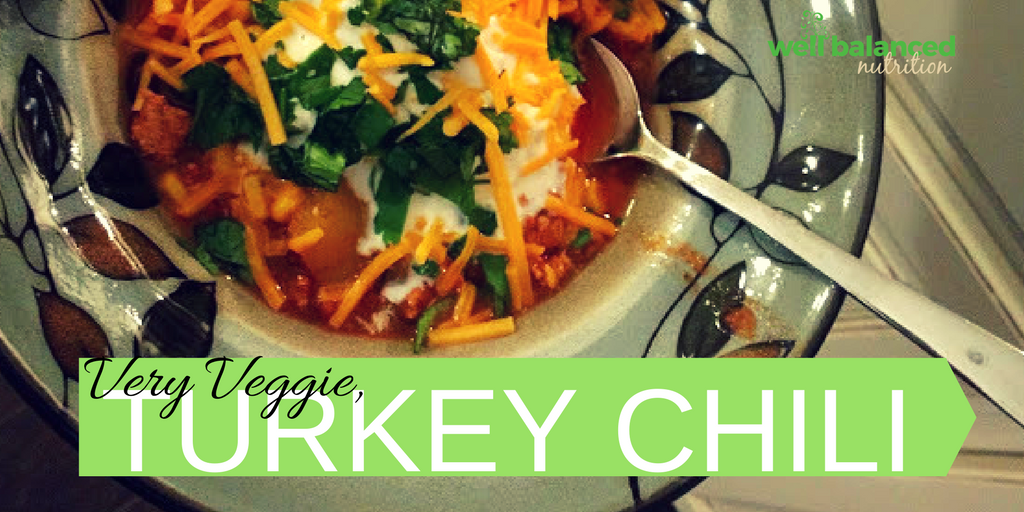
by Lucy | Dec 17, 2017 | Recipes and Meal Ideas
I will never forget it. It was my first time entering in a chili cook-off and also my first time to make chili. Luckily, it was a friendly competition among a small group of medical residents that we hung out with at the time. My family didn’t eat chili often growing up so I didn’t have a signature recipe that was passed on to me. I had to just try something completely new.
I was inspired by Emeril Lagasse’s vegetarian chili because I had never seen a chili made with so many vegetables. I didn’t need it to be vegetarian though, so I replaced the mushrooms with ground turkey. Perfect, I thought. Healthy and delicious. It was Emeril’s recipe after all, what can go wrong? So, I brought my very veggie chili to the cook-off and crossed my fingers, hoping it had a chance.
The judges were harsh, but funny and gave everyone’s chili a name. My chili earned the title: Milli Vanilli Chili. They said it looked pretty, but it turned out to be a “fake.” And for three reasons. One that was their mistake and two that were mine.
First of all, they thought the ground turkey was couscous, perhaps because it was finely crumbled or that I used 99% lean – which I don’t do anymore. Either way, it definitely wasn’t couscous.
Secondly, I left out the oh-so-important garnishes and spices that I didn’t realize were so key at the time. Now, I NEVER leave out the cilantro, green onions, and Greek yogurt. Those just make it complete!
Lastly, because of my preference, it lacked the heat that those serrano peppers would have added and that most of the other chilis had at the cook-off. If you like spicy chili – you will still love this one – just add some peppers with more heat or kick up the cayenne pepper a notch.
It may not have been a winner for the judges that day, but my family loved it. So much so that it’s now a family favorite. I’ve been perfecting it for six years, and we still call it Milli Vanilli Chili. =) It’s warming, delicious and nutritious! It looks pretty, AND it tastes good. No fake stuff here! If you are in the market for a healthy weeknight dinner that makes perfect lunch leftovers, you’ve got to try this!
- 1 lb lean ground turkey 85-93% lean
- 1 1/2 cups chopped yellow onions
- 2 tablespoons minced garlic
- 2 to 3 bell peppers stemmed, seeded, and chopped
- 1 medium zucchini stem ends trimmed and cut into small dice
- 2 cups fresh corn kernels or 1 can of corn no added sugar or salt
- 1 1/2 pounds portobello mushrooms about 5 large, stemmed, wiped clean and cubed
- 2 tablespoons chili powder
- 1 tablespoon ground cumin
- 1 1/4 teaspoons salt
- 1/4 teaspoon cayenne
- 4 large tomatoes peeled, seeded and chopped
- 3 cups cooked black beans or canned beans (low sodium, no added sugar), rinsed and drained
- 1 15-ounce can tomato sauce
- 1 cup lower sodium vegetable stock no added sugar, or water
- 1/4 cup chopped fresh cilantro leaves
Garnish for each bowl
- 1 oz Plain Greek yogurt garnish
- ? medium avocado diced, garnish
- 2 tablespoons chopped green onions garnish
- 1 oz Mild cheddar cheese optional garnish
In a large, heavy pot, brown turkey, onions, garlic, and bell peppers, and cook, stirring, until meat is browned completely. Add the zucchini, corn, and mushrooms, and cook, stirring, until soft and the vegetables give off their liquid and start to brown around the edges, about 6 minutes. Add the chili powder, cumin, salt and cayenne, and cook, stirring, until fragrant, about 30 seconds. Add the tomatoes and stir well. Add the beans, tomato sauce, and vegetable stock, stir well, and bring to a boil. Reduce the heat to medium-low and simmer, stirring occasionally, for about 20 minutes.
Remove from the heat and stir in the cilantro. Adjust the seasoning, to taste.
To serve, ladle the chili into the bowls. Top each serving with a dollop (~1oz) of yogurt and spoonful of avocado. Sprinkle with green onions (and optional 1 oz cheddar cheese) and dig in!
For lower sodium, calories and fat content, do not add the cheddar cheese. This saves you 111 calories and reduces the sodium by 182mg.
Nutrition Facts Per Serving:
calories 403
Total Fat 19g
Saturated Fat 7 g
Monounsaturated Fat 3 g
Polyunsaturated Fat 2 g
Trans Fat 0 g
Cholesterol 78 mg
Sodium 903 mg
Potassium 926 mg
Total Carbohydrate 34 g
Dietary Fiber 10 g
Sugars 17 g
Protein 33 g
Vitamin A 92 % Vitamin C 145 % Calcium 32 % Iron 20 %
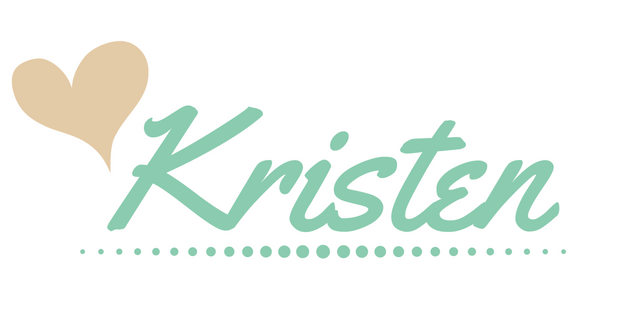

by Lucy | Dec 3, 2017 | Friday Favorites
Tis better to give than to receive, but sometimes coming up with that ‘just-right’ gift is challenging. Especially when it’s for our coworkers, teachers, or neighbors whom we may not know as well as our close loved ones. Often I see people spread holiday cheer with homemade treats or fancy chocolates. It’s true that many people enjoy sweets but isn’t there plenty of that to go around already this time of year? Why not gift something different to stand out from the crowd and that’s not food?
Here is a roundup of awesome gifts that your loved ones, friends, colleagues, teachers and neighbors will love.
DIY gifts come from the heart. Who wouldn’t want this delicious wreath and sweet stove-top potpourri? Okay, oranges are food but it was too cute to not include it.


Affirmations are powerful, but sometimes, they feel a bit cheesy. Perhaps these can help. If your gift receiver won’t mind a little swearing here and there (okay, a lot) then these bad a** affirmation cards will make them smile and feel awesome every day.
Everyday Badass Affirmation Card Deck by AngieBeeHotz
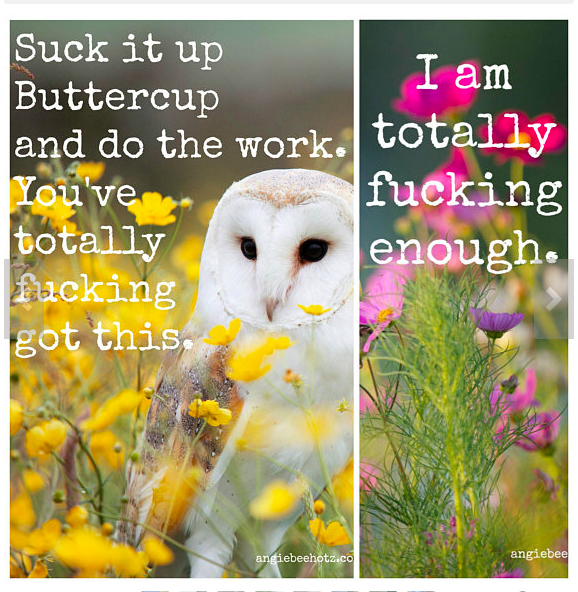
If you like the idea of non-cheesy affirmations, but not the curse words, here is another option.
Affirmators! 50 Affirmation Cards to Help You Help Yourself – without the Self-Helpy-Ness!
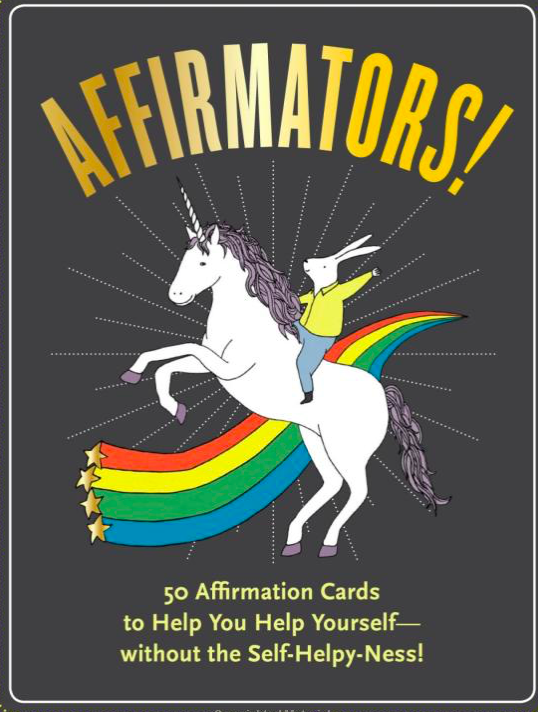
Help them relax: Essential oils can be a great stress reliever and mood booster. Give the gift of essential oils on-the-go with an aromatherapy necklace. They can simply add a few drops of their favorite oil and reap the benefits wherever they are. (Click on the pictures for links to the products.)
Aromatherapy Necklaces from Etsy

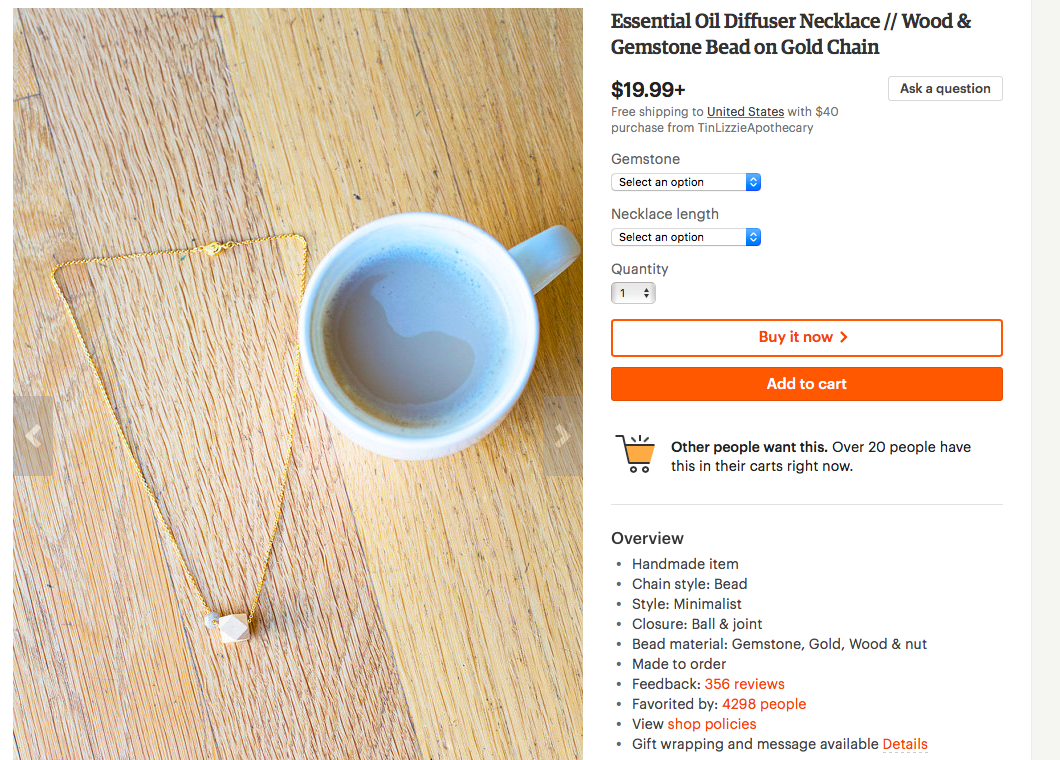
Practical and inspiring: We all use our cell phones everywhere we go, which means we all have dirty cell phones. Gift these screen cleansing towelettes that come in a meaningful package. The pattern honors Steve Dezember, John McNeeley and others battling ALS. The art for this design was created by Steve who drives over a canvas with his wheelchair. A portion of the proceeds from this pack will be donated to ALS awareness.
Well-Kept Screen Cleansing Towelettes
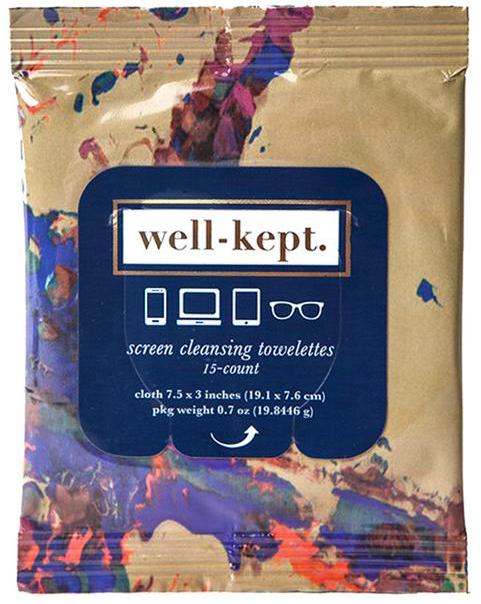
Serve it up: These beautiful and functional serving spoons are a must for the entertainer you know. They rest nicely on your serving bowl with that fun zig-zag design and no one will know it, but they help you spoon out just the right amount. The set of 4 spoons are made in standard serving sizes: 1 cup, 3/4 cup, 1/2 cup, and 1/8 cup. It is all about serving up fresh food in healthy serving.
Livliga Serving Spoons

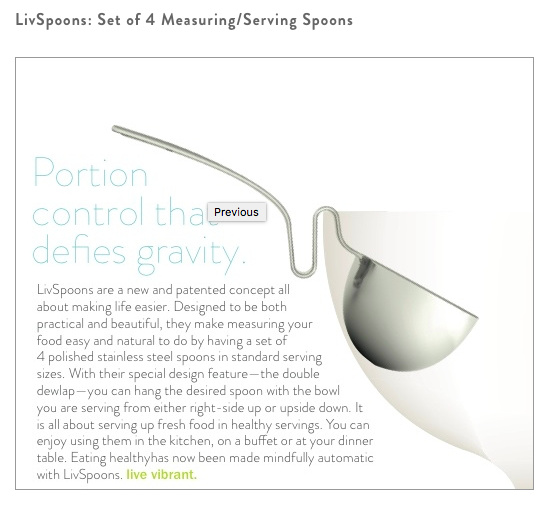
Spice up their life: Primal Palate offers gift sets of 3 spice blends like this one below. The owners of Primal Palate say, “we want you to experience cooking with spices like never before; using spices that are the highest quality, the freshest, and quite simply… the best.
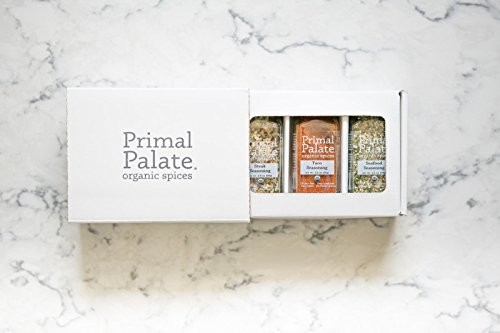
Gift-giving can be so rewarding! Hopefully, we gave you some new ideas for your gift exchange party, neighbors, family, and friends.
What is your favorite gift to receive?














